The key to winning any dart board tournament lies in consistent practice, strategic gameplay, and understanding the rules; this guide will help you prepare for and excel in your next competition. We’ll cover everything from choosing the right equipment and mastering throwing techniques to tournament etiquette and advanced strategies.
⚠️ Still Using Pen & Paper (or a Chalkboard)?! ⚠️
Step into the future! The Dart Counter App handles all the scoring, suggests checkouts, and tracks your stats automatically. It's easier than you think!
Try the Smart Dart Counter App FREE!Ready for an upgrade? Click above!
Choosing Your Darts for a Dart Board Tournament
Selecting the right darts is a crucial first step. Consider the weight, grip, and balance. Most players find darts between 22 and 24 grams to be a good starting point, but personal preference is paramount. Experiment with different weights and barrel styles until you find what feels most comfortable and consistent in your hand. Different barrel grips cater to different throwing styles. A knurled grip provides a strong hold, while smoother barrels allow for easier release. The shaft and flight also contribute to the dart’s trajectory and stability.
When selecting your darts, consider these factors:
- Weight: Experiment to find your optimal weight.
- Grip: Choose a barrel with a grip that feels secure but not restrictive.
- Shaft Length: Shorter shafts generally improve accuracy but can increase bounce-outs.
- Flight Shape: Larger flights provide more stability, while smaller flights offer greater speed.
Don’t be afraid to try different combinations of shafts and flights. What works for one player might not work for another. The goal is to find a setup that allows you to throw consistently and accurately.
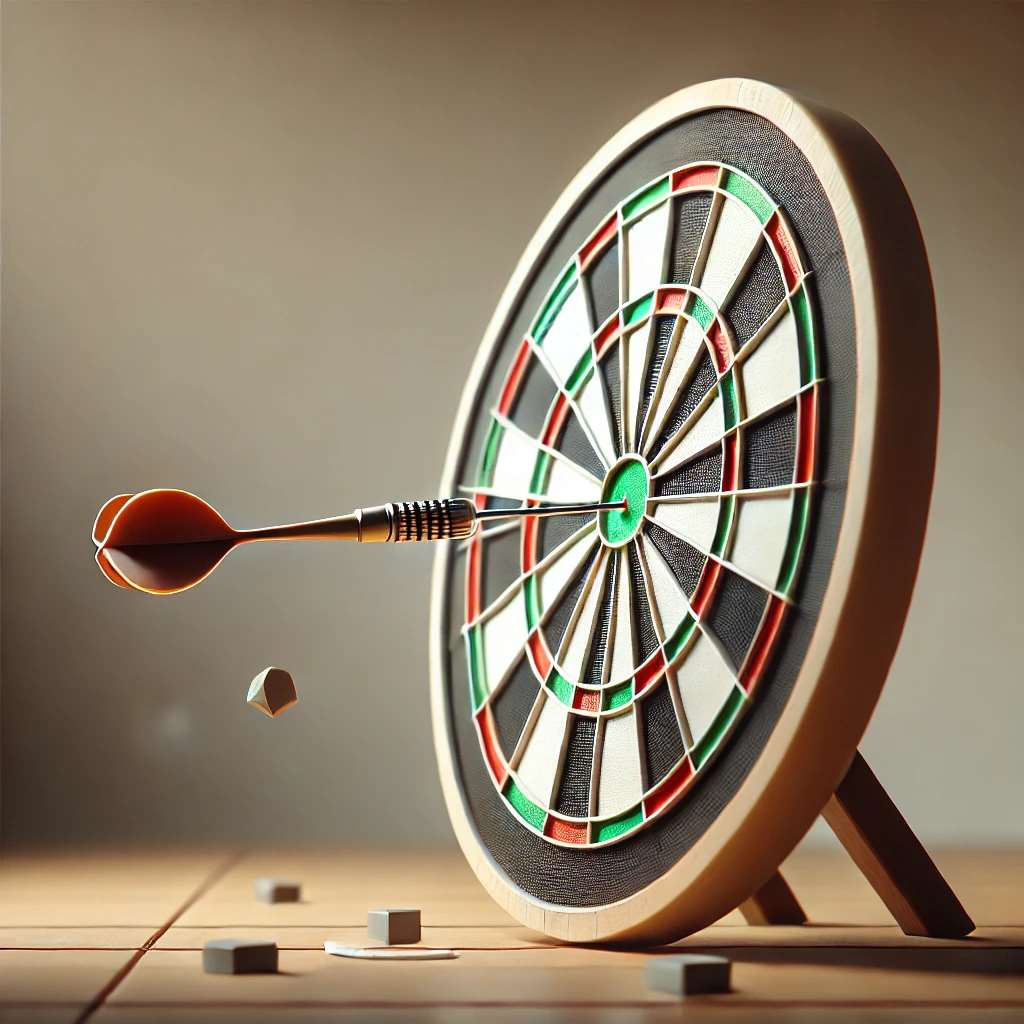
Mastering the Throwing Technique for Dart Board Tournaments
Consistent throwing technique is the cornerstone of success in any dart board tournament. Start with a stable stance, positioning yourself comfortably in front of the oche (the throwing line). Keep your body still and your arm relaxed. The motion should come primarily from your elbow and forearm, not your shoulder. Aim for a smooth, fluid release, following through towards your target. Practice this motion repeatedly to develop muscle memory and improve accuracy. Many players also utilize the dart precision cleaner to keep their darts in optimal condition.
Key Elements of a Good Throw
- Stance: Maintain a stable and balanced stance.
- Grip: Hold the dart firmly but not too tightly.
- Arm Motion: Use a smooth, controlled motion from your elbow and forearm.
- Release: Release the dart at the same point each time.
- Follow-Through: Extend your arm towards the target after releasing the dart.
Recording yourself throwing darts can provide valuable insights into your technique. Analyze your stance, grip, arm motion, and release point to identify areas for improvement. Pay close attention to your follow-through, as it often reveals inconsistencies in your throw.
Regular practice is essential for improving your throwing technique. Set aside dedicated practice time each day, even if it’s just for a few minutes. Focus on consistency and accuracy, rather than just throwing as many darts as possible.
Understanding the Rules and Etiquette of Dart Board Tournaments
A thorough understanding of the rules is paramount when participating in a dart board tournament. Common games played include 501, 301, and Cricket. Familiarize yourself with the specific rules of the game being played in the tournament, including the starting score, checkout requirements (e.g., double out), and any specific scoring rules. Also, learn about some important darts facts.
Tournament etiquette is also crucial. Be respectful of your opponents and other players. Avoid talking or moving while someone is throwing. Retrieve your darts promptly and efficiently. Call your scores clearly and accurately. Show good sportsmanship, win or lose. It’s also important to be aware of your surroundings and avoid distracting other players.
Key Etiquette Points
- Respect your opponents.
- Stay quiet while others are throwing.
- Retrieve your darts promptly.
- Call your scores clearly.
- Show good sportsmanship.
Understanding the rules ensures fair play and avoids misunderstandings during the dart board tournament. Adhering to etiquette promotes a positive and respectful environment for all participants.
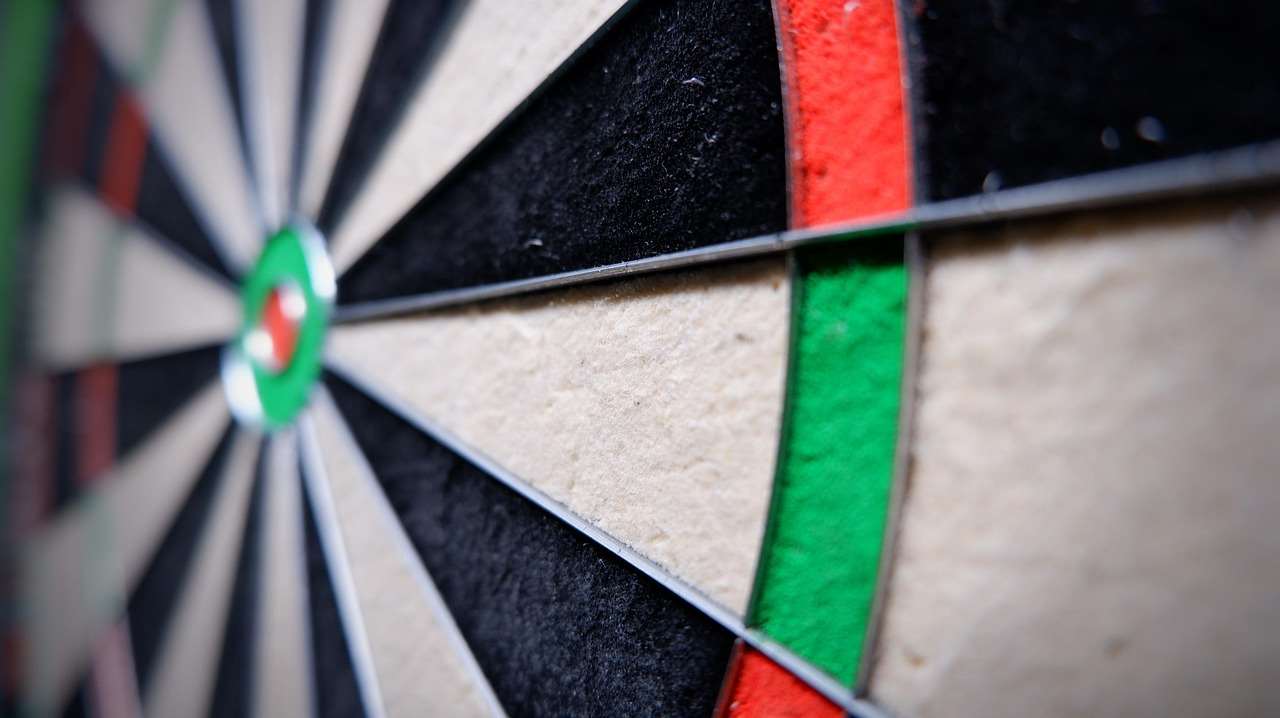
Strategies for Success in a Dart Board Tournament
Beyond technique, strategy plays a significant role in dart board tournament success. In 501, for example, knowing which numbers to target to set up a double for the checkout is crucial. Practice common checkout combinations like 32 (double 16), 40 (double 20), and 50 (bullseye). Aim for the highest scoring beds (20s and 19s) to reduce your score quickly. Consider your opponent’s score and adjust your strategy accordingly. A Mobile dart scorer (https://dartcounterapp.com/) can also greatly help with keeping track of the score and working out optimal strategies.
Advanced Strategies
- Checkout Planning: Develop a plan for checking out from various scores.
- Score Maximization: Aim for high-scoring areas to reduce your score quickly.
- Opponent Awareness: Consider your opponent’s score and adjust your strategy accordingly.
- Mental Game: Stay focused and positive, even when facing setbacks.
The mental game is just as important as the physical game. Stay focused, confident, and positive. Don’t get discouraged by a few bad throws. Visualize success and maintain a calm demeanor under pressure. Believe in your ability to perform well. Preparation and a positive mindset will dramatically enhance your performance in the dart board tournament.
Practicing Effectively for a Dart Board Tournament
Effective practice is crucial for maximizing your potential in a dart board tournament. Don’t just throw aimlessly; structure your practice sessions to focus on specific skills and strategies. Practice your checkouts regularly. Spend time aiming at specific targets, such as the bullseye, double 20, and treble 20. Simulate tournament conditions by playing against yourself or with a practice partner. Track your progress and identify areas that need improvement.
Practice Drills
- Checkout Practice: Practice common checkout combinations.
- Target Practice: Focus on specific targets, such as the bullseye and treble 20.
- Match Simulation: Simulate tournament conditions by playing against yourself or with a practice partner.
Vary your practice routine to keep things interesting and challenging. Set goals for each practice session and track your progress. Celebrate your successes and learn from your mistakes. Consistent and focused practice will significantly improve your skills and confidence for the dart board tournament.
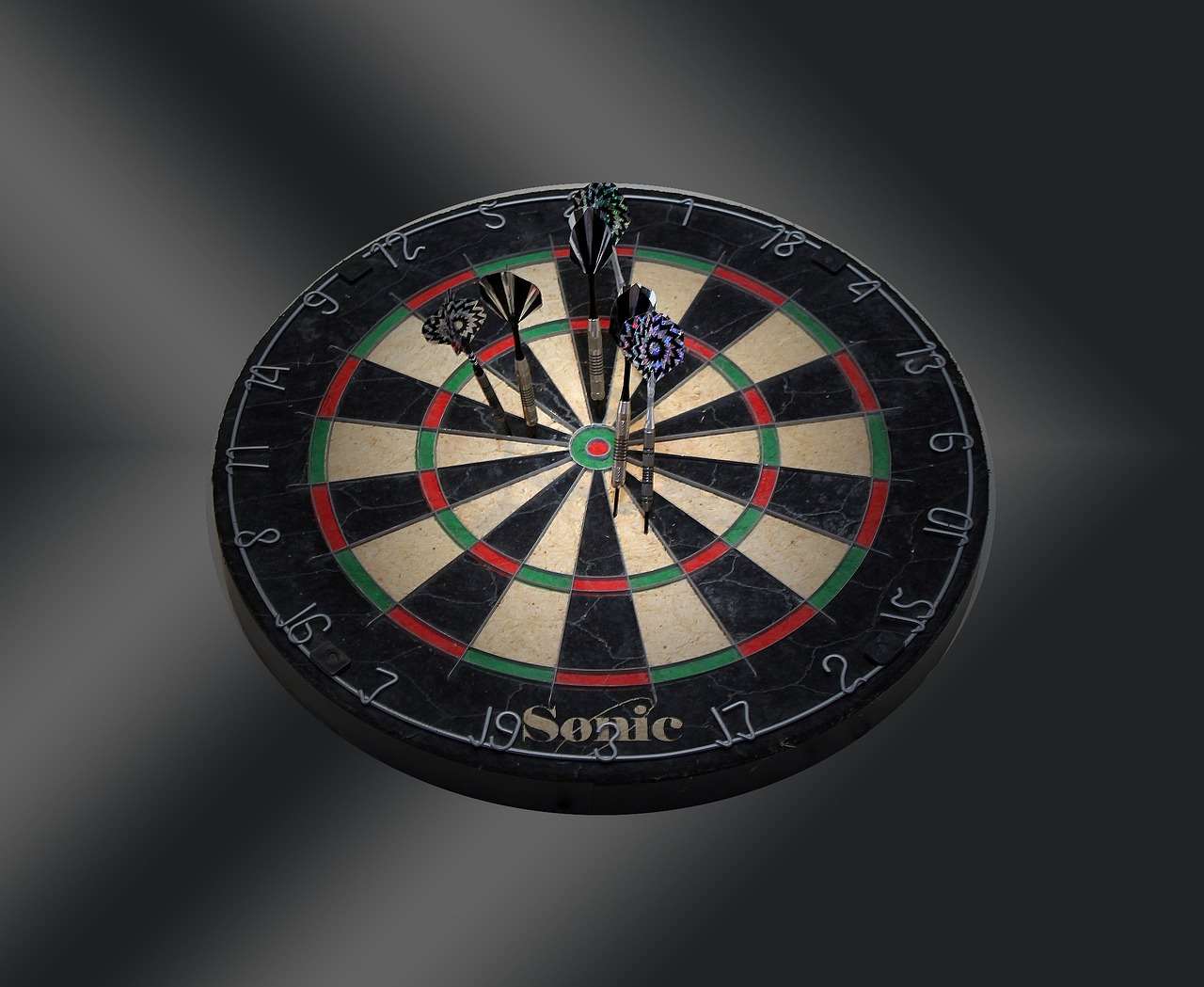
Equipment Maintenance and Preparation
Maintaining your equipment is an often-overlooked aspect of preparing for a dart board tournament. Ensure your darts are in good condition. Check the points for sharpness and replace them if necessary. Tighten your shafts and flights regularly. Clean your darts to remove dirt and grime. Bring spare shafts, flights, and points to the tournament in case of breakage. This ensures you are always prepared for anything that might happen.
Essential Maintenance Tips
- Sharpen points regularly.
- Tighten shafts and flights.
- Clean your darts.
- Bring spare equipment.
A well-maintained dartboard is also essential. Rotate the board regularly to distribute wear evenly. Clean the board with a soft brush to remove dust and debris. Replace the board when it becomes too worn or damaged. Consistent maintenance will keep your equipment in optimal condition and improve your performance in the dart board tournament.
Managing Nerves and Pressure During a Dart Board Tournament
Even the most skilled dart players experience nerves and pressure during a dart board tournament. It’s important to develop strategies for managing these emotions. Before the tournament, practice relaxation techniques such as deep breathing or meditation. Visualize yourself performing well and staying calm under pressure. During the tournament, focus on your breathing and take each throw one at a time. Avoid dwelling on past mistakes or worrying about the outcome. Remember, everyone makes mistakes, so learn from them and move on. Sometimes gta v darts score was not a double doesn’t translate to real life.
Techniques for Managing Pressure
- Relaxation Techniques: Practice deep breathing or meditation.
- Visualization: Visualize yourself performing well.
- Focus on the Present: Take each throw one at a time.
- Positive Self-Talk: Encourage yourself and stay positive.
Positive self-talk can also be helpful. Remind yourself of your strengths and accomplishments. Believe in your ability to perform well, even when facing adversity. A calm and confident mindset will significantly improve your performance in the dart board tournament.
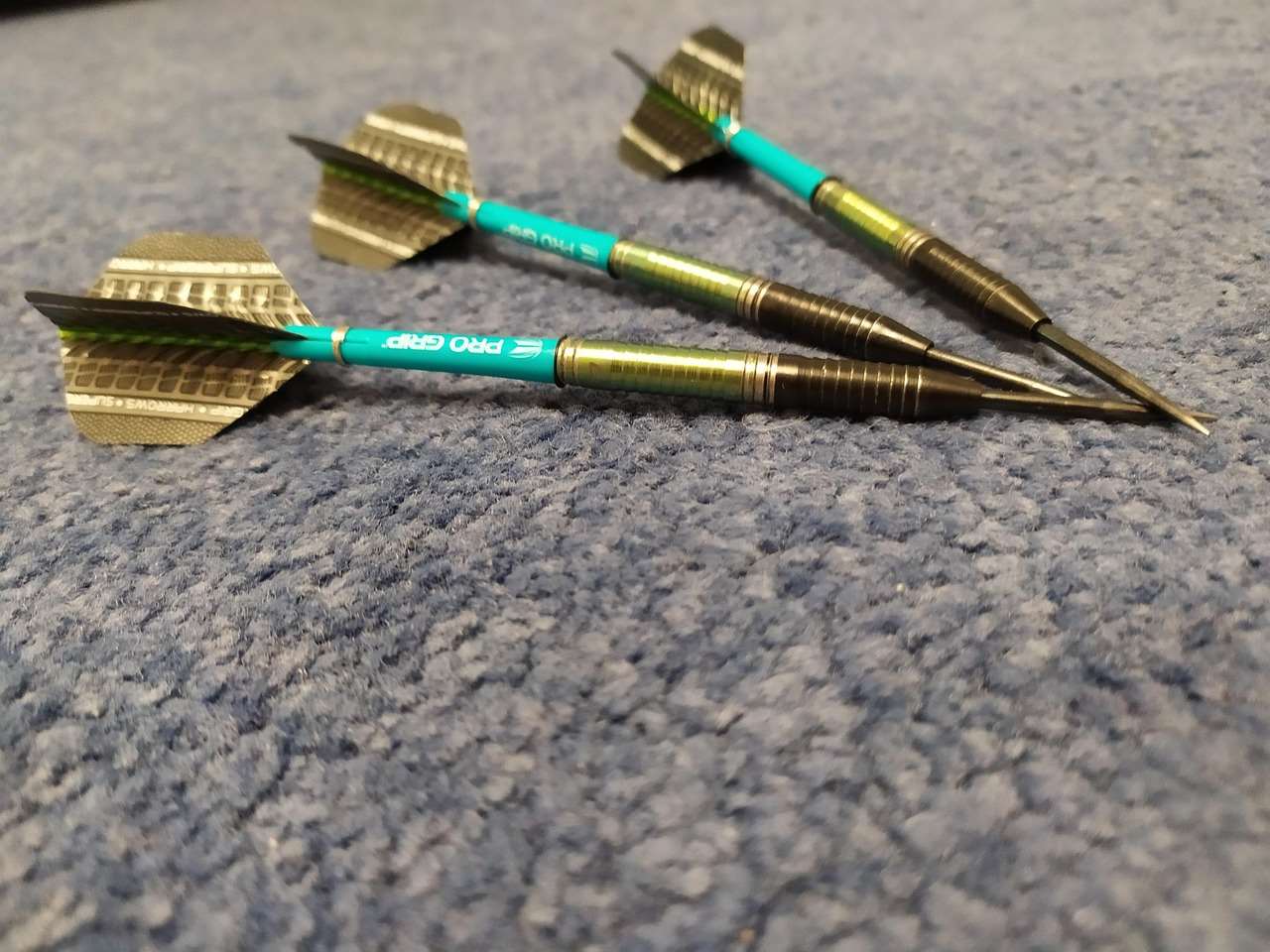
Analyzing Your Performance and Identifying Areas for Improvement
After each dart board tournament, take time to analyze your performance and identify areas for improvement. Review your scores, checkouts, and throwing technique. Identify patterns in your mistakes and try to understand the underlying causes. Seek feedback from coaches or experienced players. Use this information to adjust your practice routine and focus on specific areas that need improvement. Continuous analysis and improvement are key to long-term success in darts.
Key Areas for Analysis
- Scores: Review your scores and identify areas where you can improve your scoring average.
- Checkouts: Analyze your checkout percentage and practice your checkout combinations.
- Throwing Technique: Review your throwing technique and identify any inconsistencies or areas for improvement.
Consider keeping a darting journal to track your progress and identify trends. Note your scores, practice routines, and any challenges you encounter. This will provide valuable insights into your game and help you to develop a more effective practice strategy. Remember, consistent improvement comes from dedicated practice and a keen eye for self-assessment.
Staying Inspired and Motivated
Maintaining inspiration and motivation is crucial for continued improvement in darts. Set realistic goals for yourself and celebrate your accomplishments along the way. Watch professional dart players and learn from their techniques and strategies. Join a local dart league or club to connect with other players and compete regularly. Stay positive and focused on your goals, even when facing setbacks. Remember why you enjoy playing darts and embrace the challenges and rewards of the sport. You might even want to research darts nine darter adam mould to get inspired.
Tips for Staying Motivated
- Set realistic goals.
- Celebrate your accomplishments.
- Watch professional players.
- Join a dart league or club.
- Stay positive.
Remember that improvement takes time and effort. Don’t get discouraged by slow progress or occasional setbacks. Stay patient, persistent, and focused on your goals. With dedication and hard work, you can achieve your full potential in darts and enjoy the rewards of a lifetime sport.
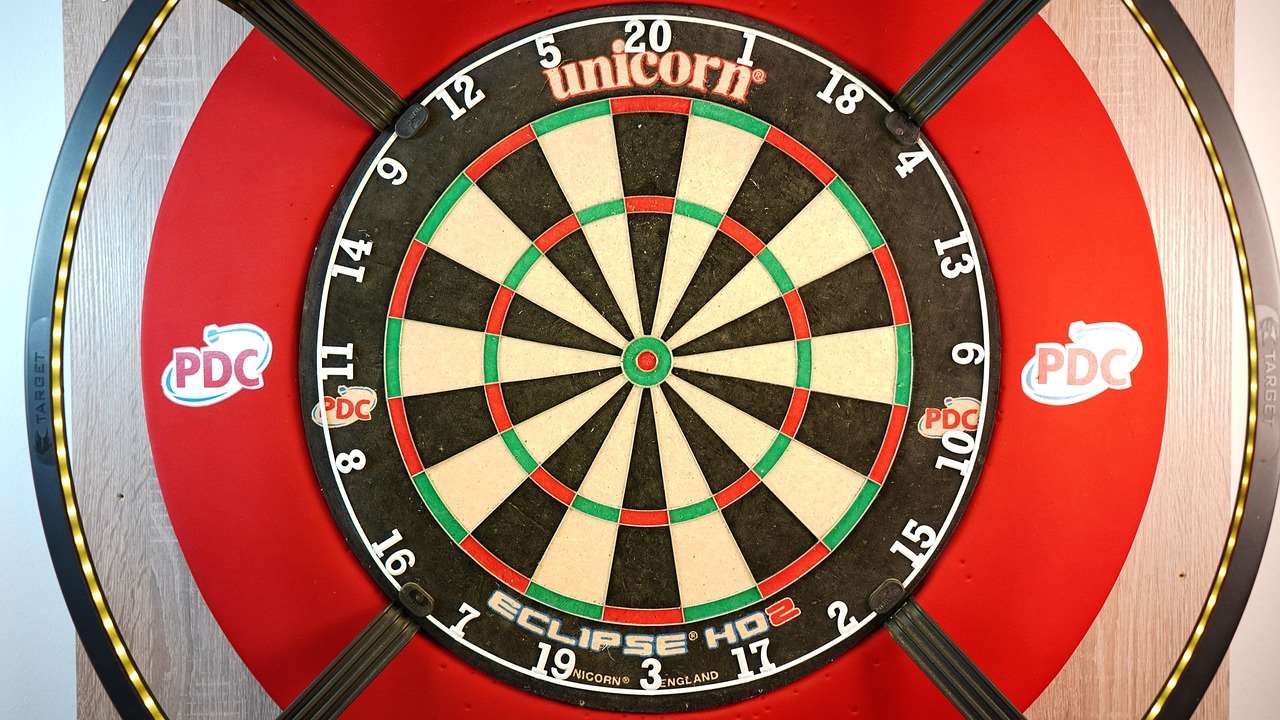
Conclusion
Participating in a dart board tournament requires a combination of skill, strategy, and mental fortitude. By choosing the right equipment, mastering your throwing technique, understanding the rules and etiquette, developing effective strategies, practicing diligently, maintaining your equipment, managing your nerves, analyzing your performance, and staying motivated, you can significantly improve your chances of success. Remember, consistent effort and a positive attitude are the keys to achieving your full potential in darts. So, take these tips, practice hard, and get ready to dominate your next dart board tournament! Now get out there and throw some darts!
Hi, I’m Dieter, and I created Dartcounter (Dartcounterapp.com). My motivation wasn’t being a darts expert – quite the opposite! When I first started playing, I loved the game but found keeping accurate scores and tracking stats difficult and distracting.
I figured I couldn’t be the only one struggling with this. So, I decided to build a solution: an easy-to-use application that everyone, no matter their experience level, could use to manage scoring effortlessly.
My goal for Dartcounter was simple: let the app handle the numbers – the scoring, the averages, the stats, even checkout suggestions – so players could focus purely on their throw and enjoying the game. It began as a way to solve my own beginner’s problem, and I’m thrilled it has grown into a helpful tool for the wider darts community.